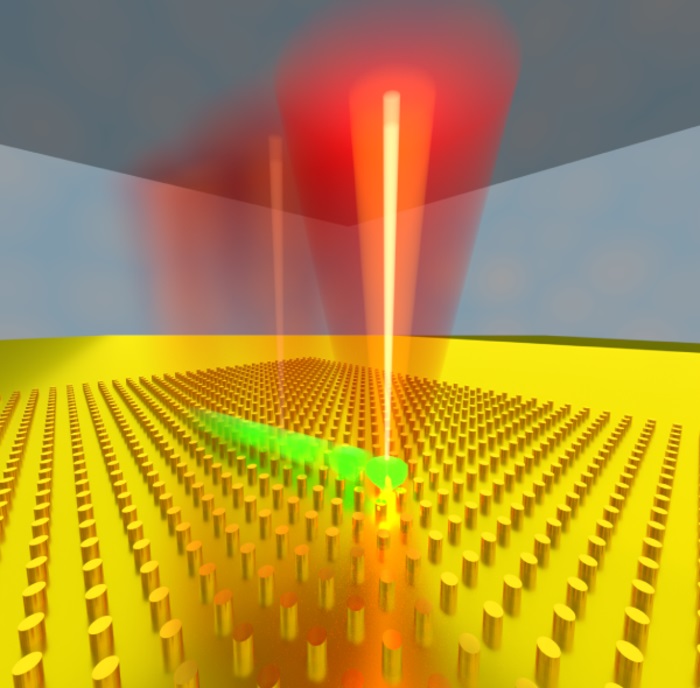Led by Justus Ndukaife, assistant professor of electrical engineering, Vanderbilt researchers have introduced an approach for trapping and moving a single colloidal nanodiamond with nitrogen-vacancy center using a low-power laser beam. The width of a single human hair is approximately 90,000 nm; nanodiamonds are less than 100 nm. These carbon-based materials are one of the few that can release a single photon, considered a building block for future quantum photonics applications, Ndukaife said.
It is currently possible to trap nanodiamonds using light fields focused near nano-size metallic surfaces, but it is not possible to move them that way; laser beam spots are simply too big. Using an atomic force microscope, it takes scientists hours to push nanodiamonds into place one at a time near an emission-enhancing environment to form a useful structure. Further, to create entangled sources and qubits — elements that improve the processing speeds of quantum computers — several nanodiamond emitters are needed close together so that they can interact to make qubits, Ndukaife said.

A rendering of the low-frequency electrothermoplasmonic tweezer device in action. Courtesy of Justus Ndukaife.
“We set out to make trapping and manipulating nanodiamonds simpler by using interdisciplinary approach,” Ndukaife said. “Our tweezer, a low-frequency electrothermoplasmonic tweezer (LFET), combines a fraction of a laser beam with a low-frequency alternating current electric field. This is an entirely new mechanism to trap and move nanodiamonds.”
With this method, a nanodiamond can be moved in a matter of seconds. LFET is the first scalable transport and on-demand assembly technology of its kind, the researchers noted in their paper.
“Controlling nanodiamonds to make efficient single-photon sources that can be used for these kinds of technologies will shape the future,” Ndukaife said. “To enhance quantum properties, it is essential to couple quantum emitters such as nanodiamonds with nitrogen-vacancy centers to nanophotonic structures.”
Ndukaife plans to explore nanodiamonds further, arranging them onto nanophotonic structures designed to enhance their emission performance. With the increased control over the components afforded by this work, Ndukaife’s lab seeks to explore the possibilities for ultrabright single-photon sources and entanglement in an on-chip platform for information and imaging.
“There are so many things we can use this research to build upon,” Ndukaife said. “This is the first technique that allows us to dynamically manipulate single nanoscale objects in two dimensions using a low-power laser beam.”
The research was published in Nano Letters (www.doi.org/10.1021/acs.nanolett.1c00357).